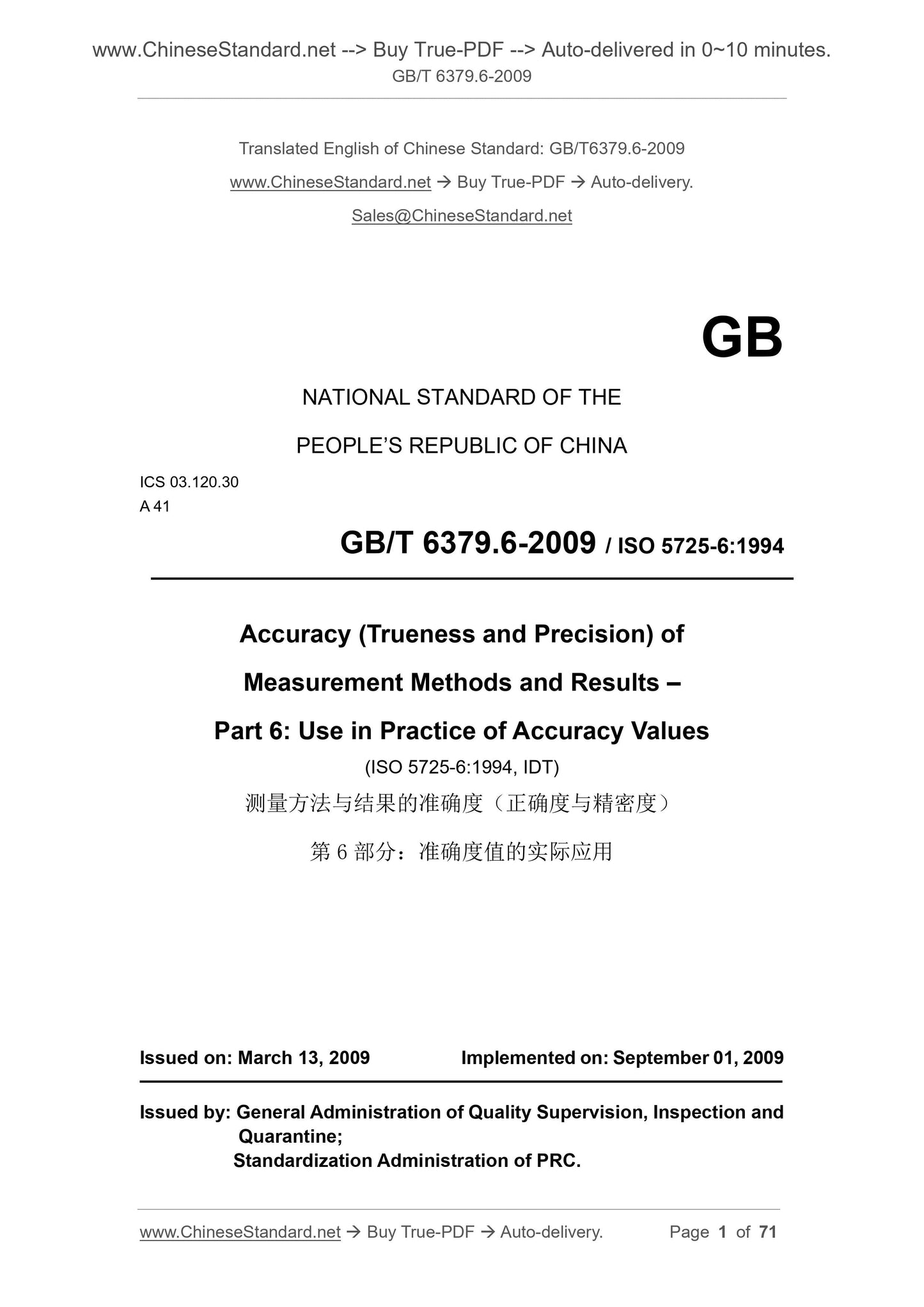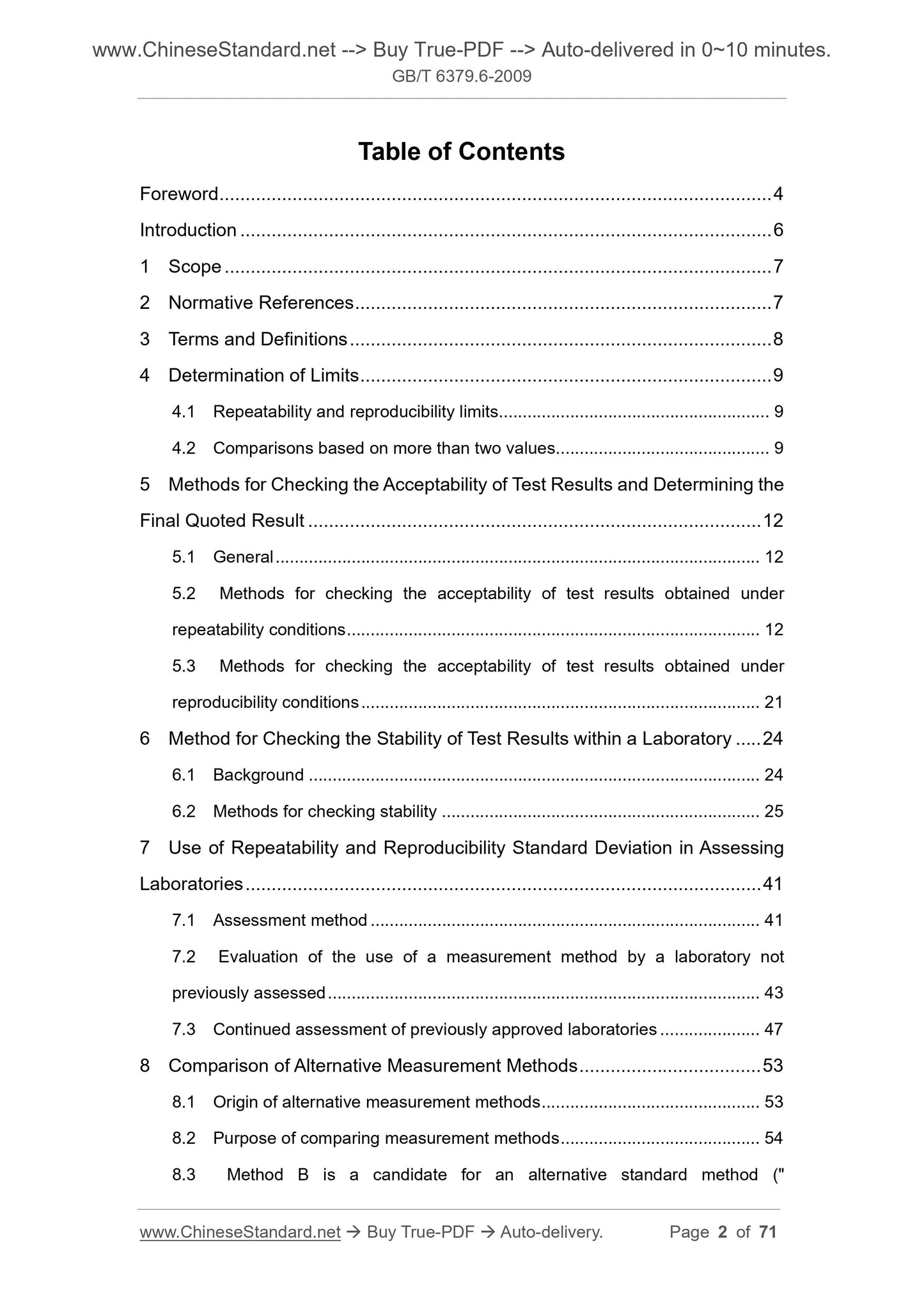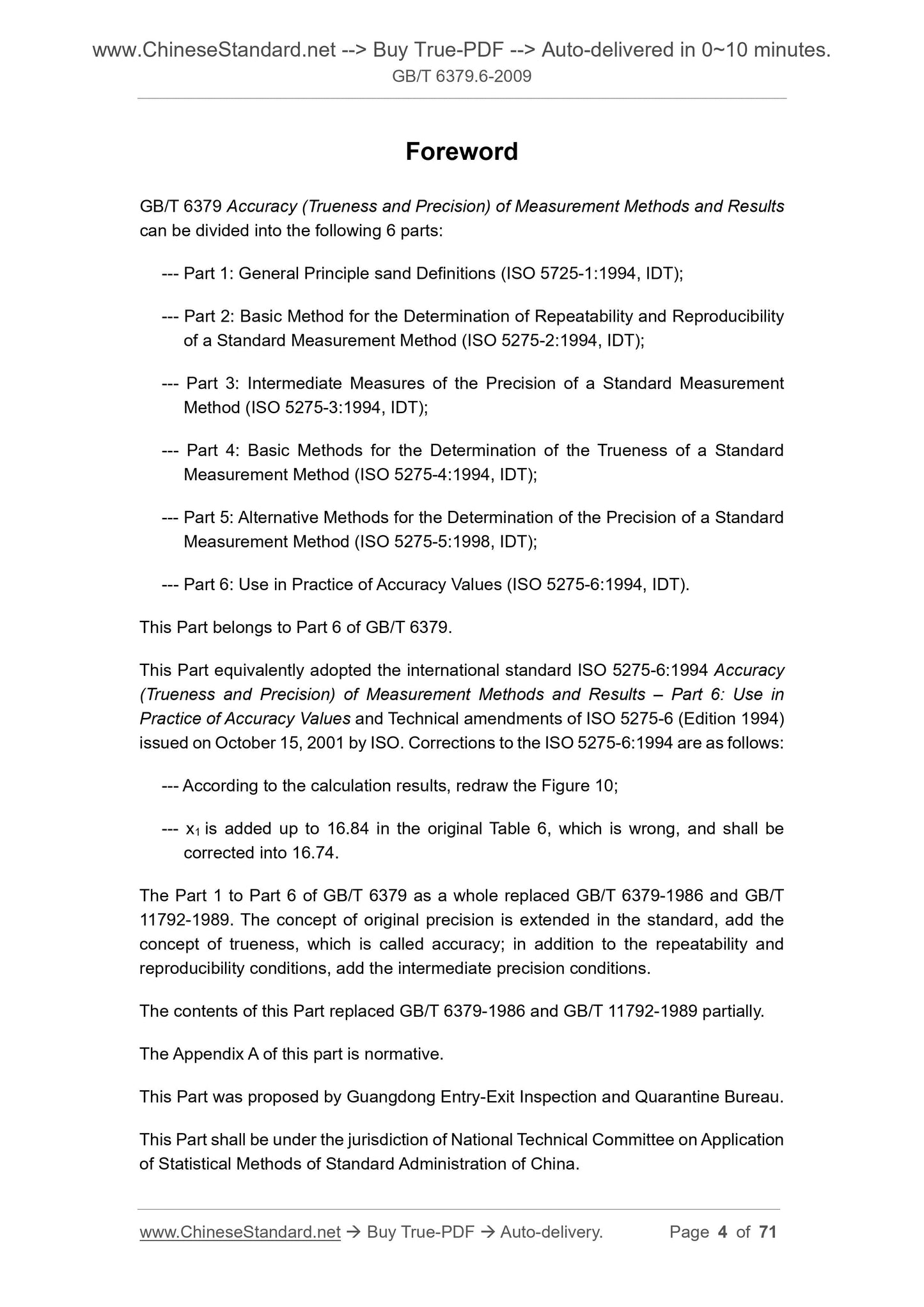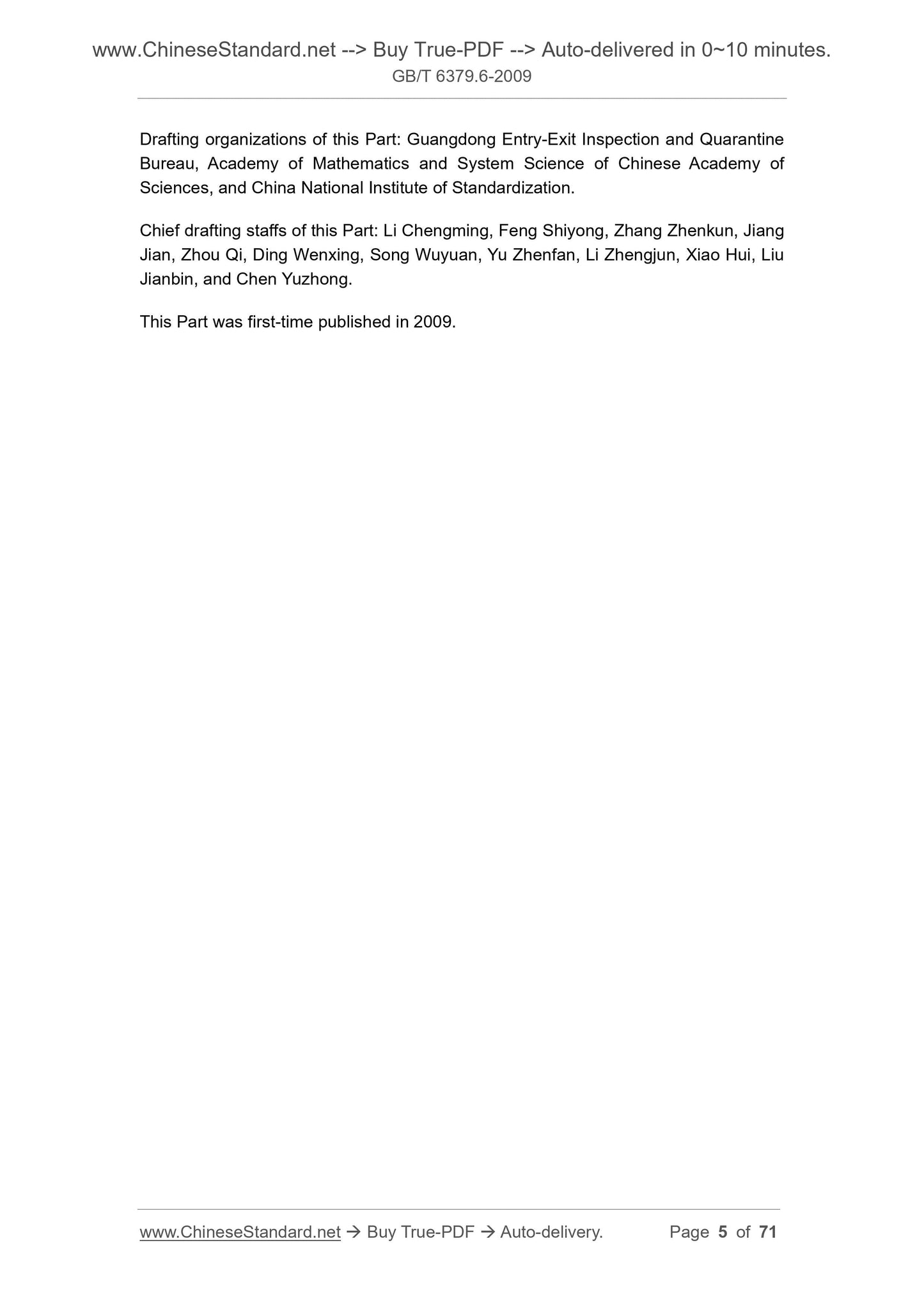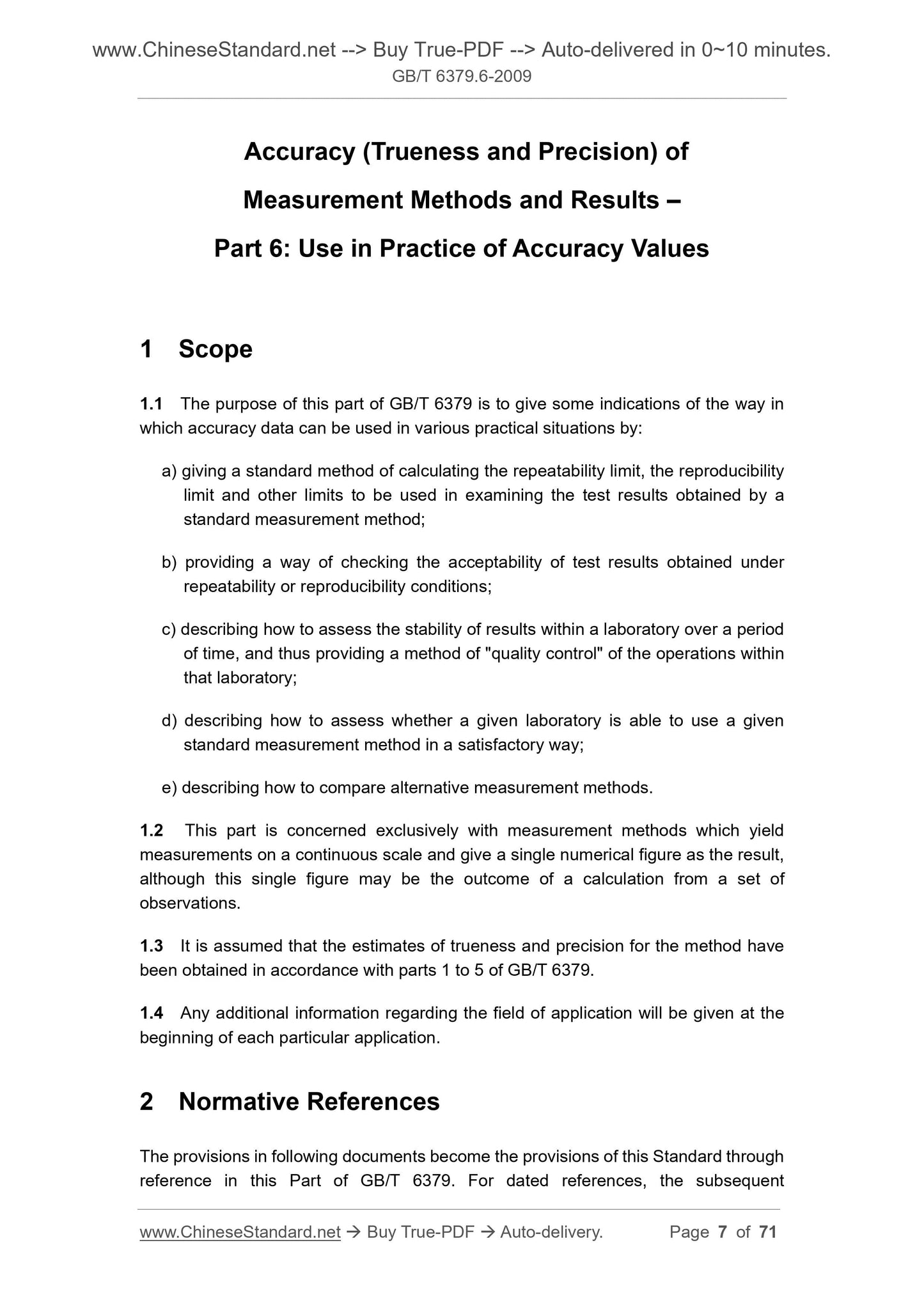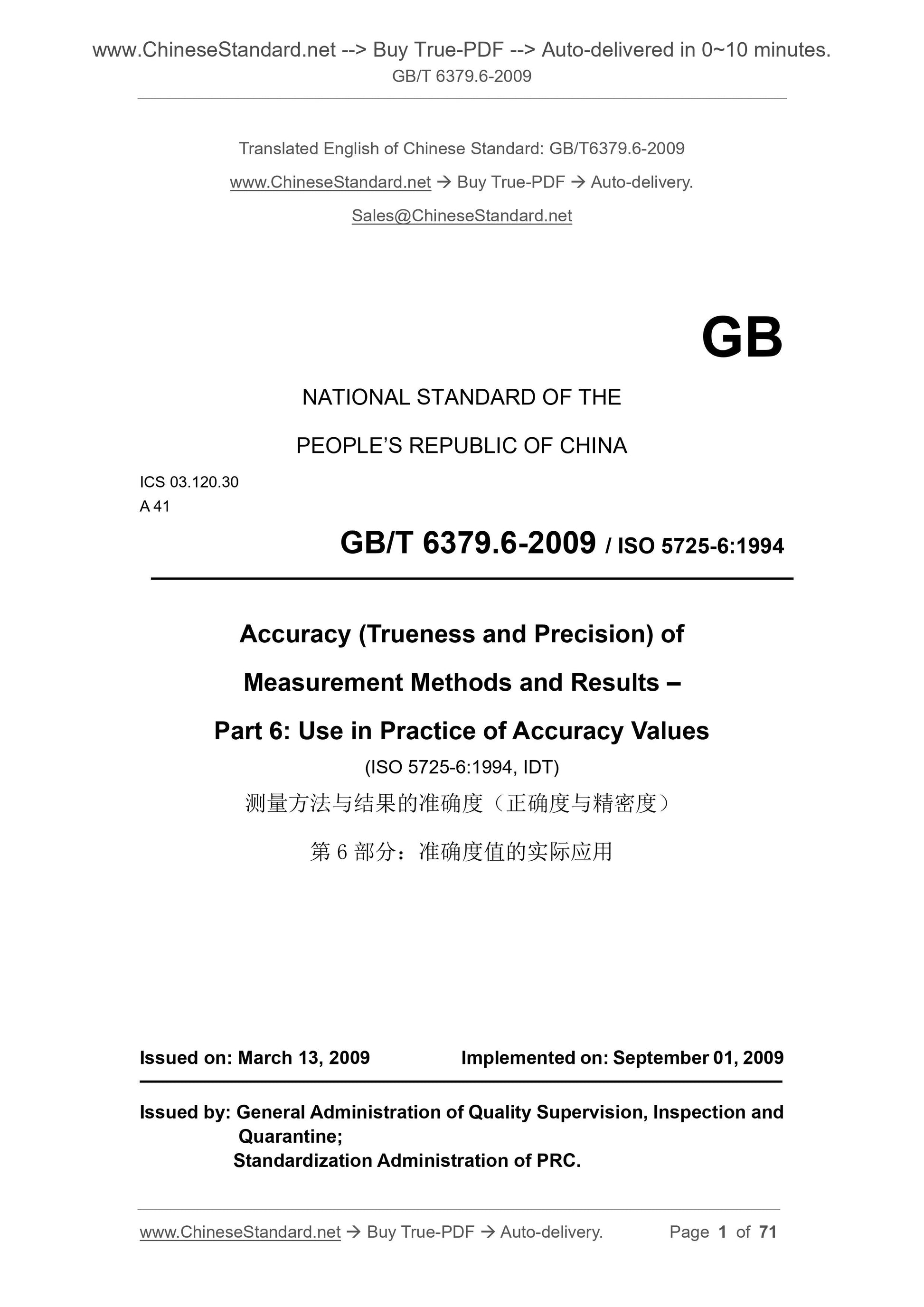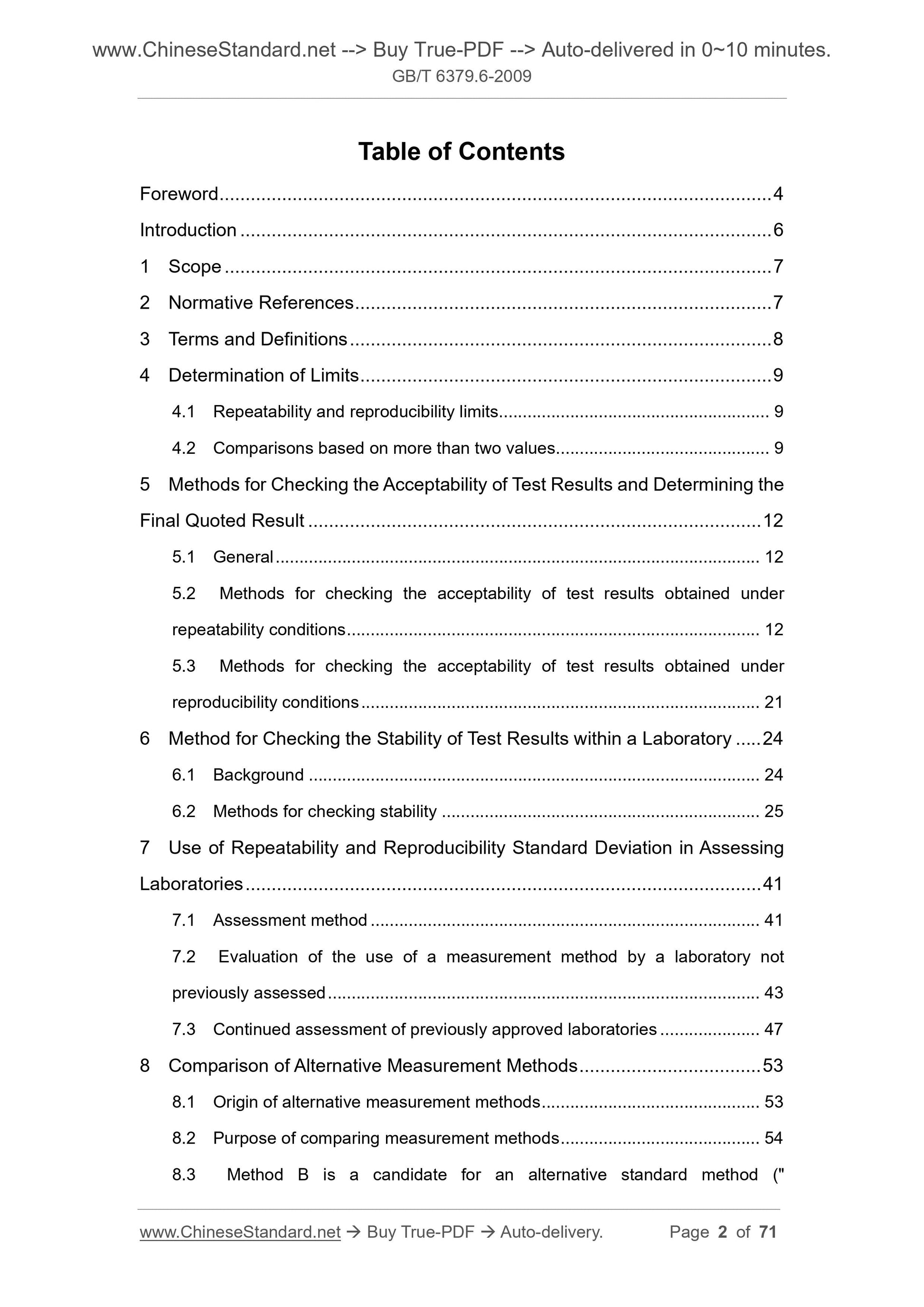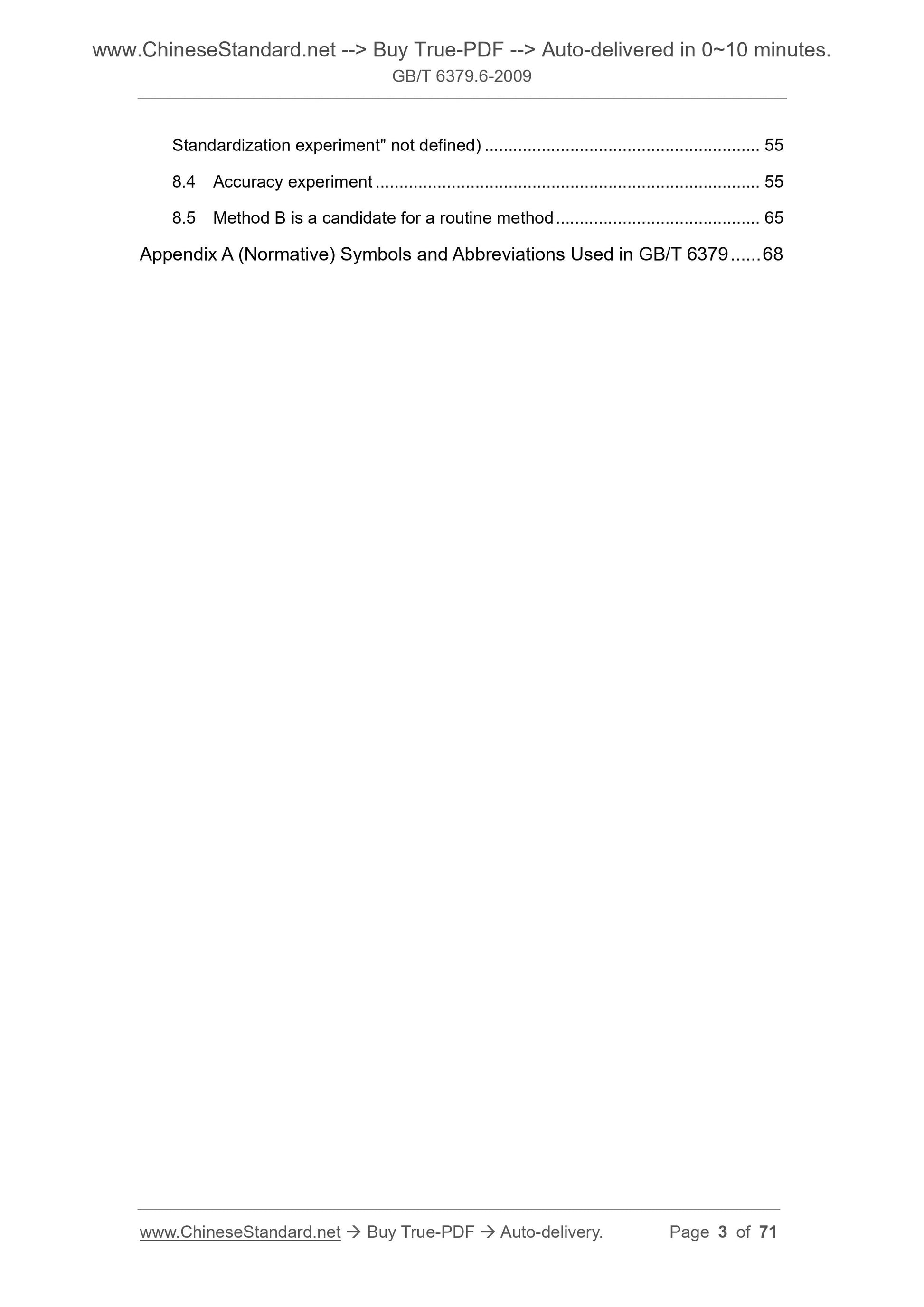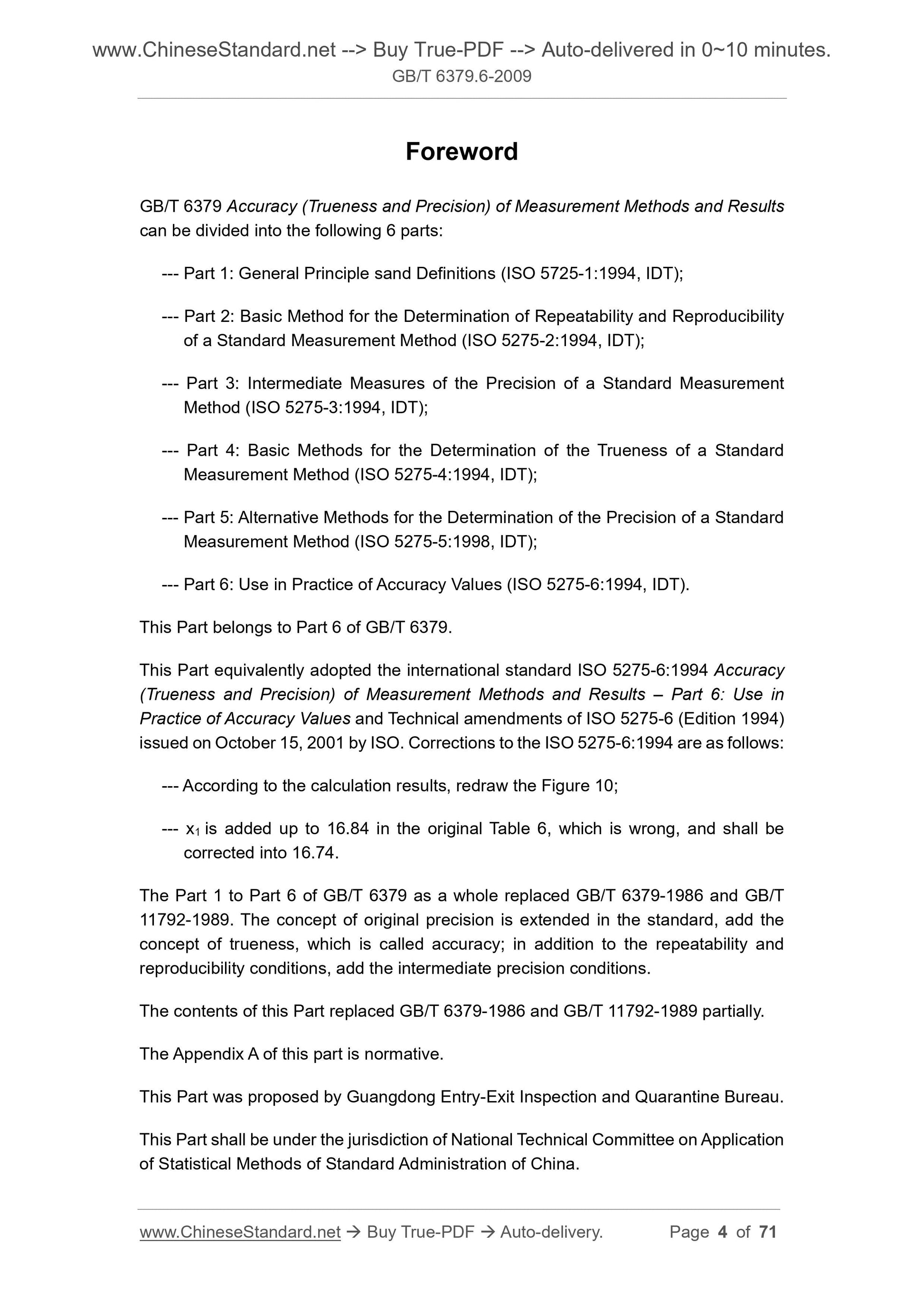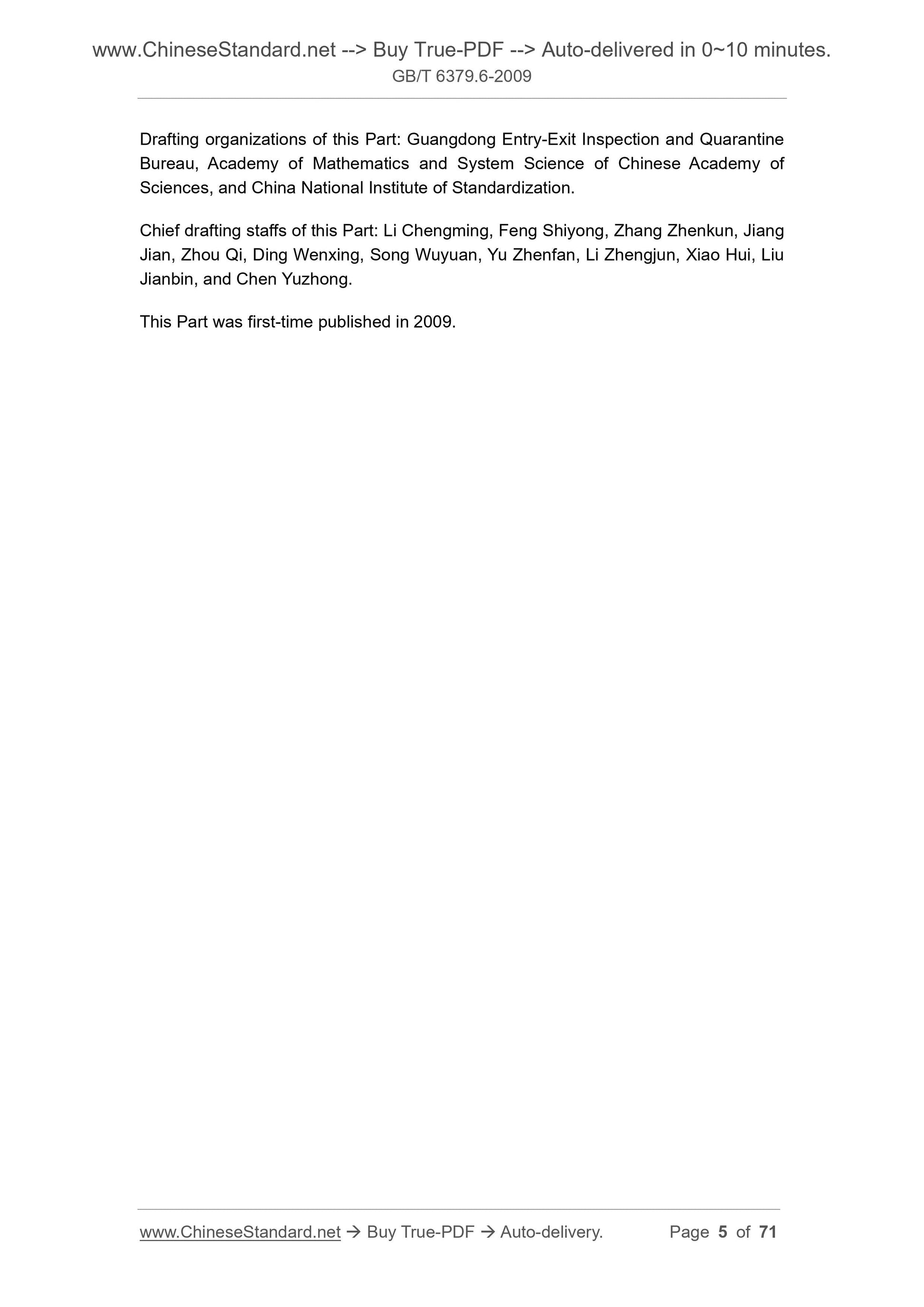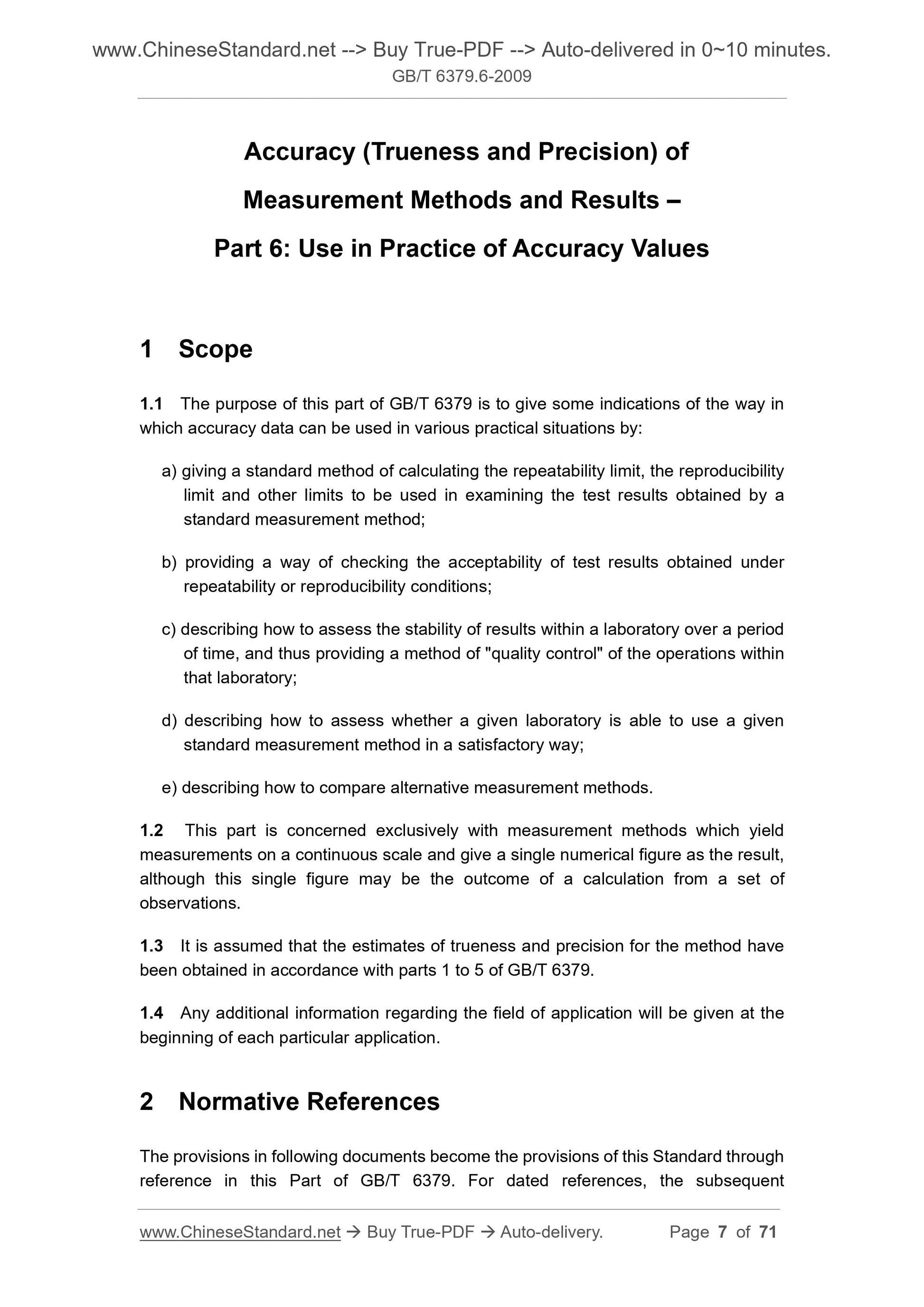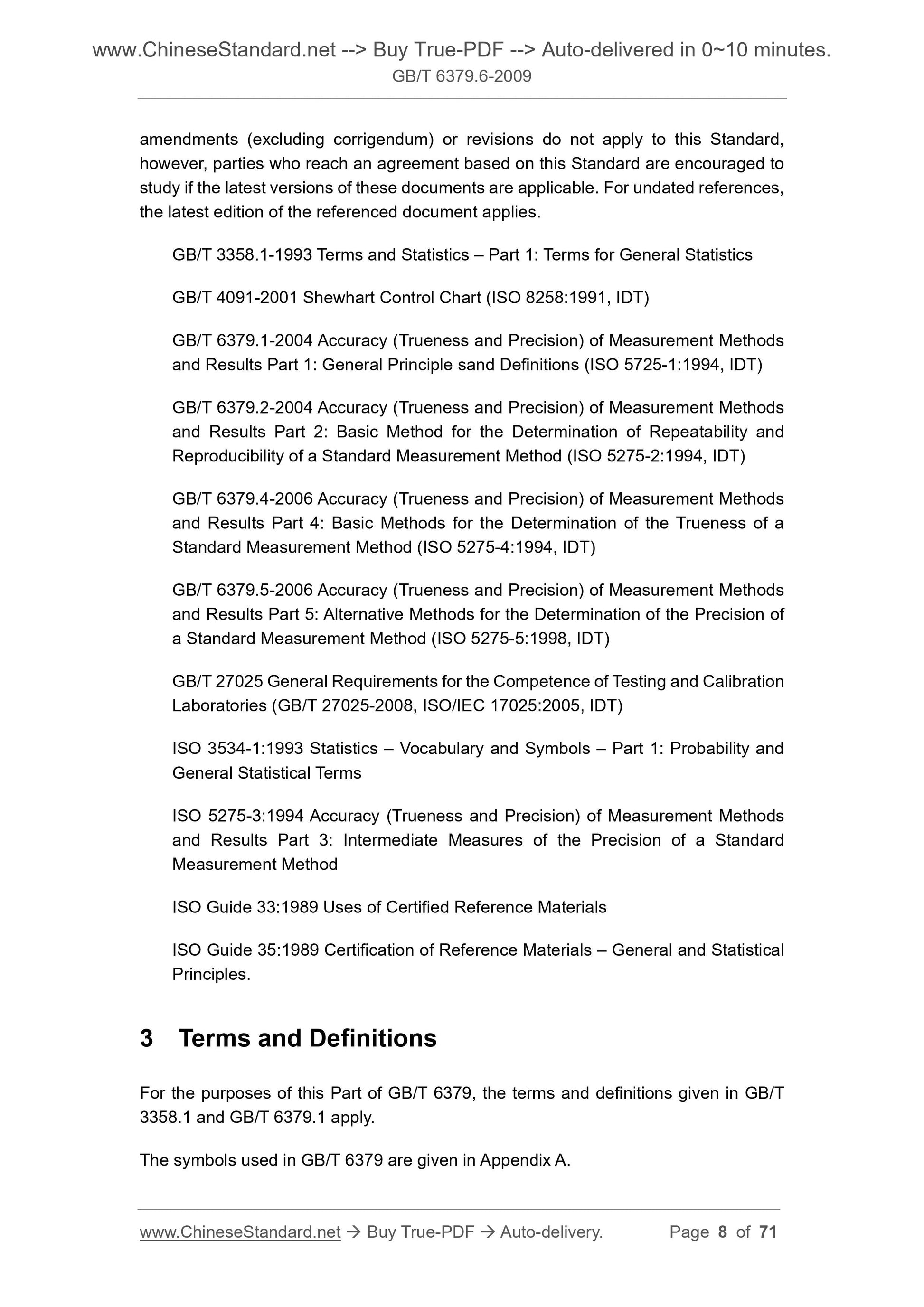1
/
of
7
www.ChineseStandard.us -- Field Test Asia Pte. Ltd.
GB/T 6379.6-2009 English PDF (GB/T6379.6-2009)
GB/T 6379.6-2009 English PDF (GB/T6379.6-2009)
Regular price
$290.00
Regular price
Sale price
$290.00
Unit price
/
per
Shipping calculated at checkout.
Couldn't load pickup availability
GB/T 6379.6-2009: Accuracy (trueness and precision) of measurement methods and results -- Part 6: Use in practice of accuracy values
Delivery: 9 seconds. Download (and Email) true-PDF + Invoice.Get Quotation: Click GB/T 6379.6-2009 (Self-service in 1-minute)
Newer / historical versions: GB/T 6379.6-2009
Preview True-PDF
Scope
It is assumed that the estimates of trueness and precision for the method havebeen obtained in accordance with parts 1 to 5 of GB/T 6379.
Any additional information regarding the field of application will be given at the
beginning of each particular application.
Basic Data
| Standard ID | GB/T 6379.6-2009 (GB/T6379.6-2009) |
| Description (Translated English) | Accuracy (trueness and precision) of measurement methods and results -- Part 6: Use in practice of accuracy values |
| Sector / Industry | National Standard (Recommended) |
| Classification of Chinese Standard | A41 |
| Classification of International Standard | 03.120.30 |
| Word Count Estimation | 43,493 |
| Date of Issue | 2009-03-13 |
| Date of Implementation | 2009-09-01 |
| Older Standard (superseded by this standard) | GB/T 11792-1989; GB/T 6379-1986 |
| Quoted Standard | GB/T 3358.1-1993; GB/T 4091-2001; GB/T 6379.1-2004; GB/T 6379.2-2004; GB/T 6379.4-2006; GB/T 6379.5-2006; GB/T 27025; ISO 3534-1-1993; ISO 5725-3-1994; ISO Guide 33-1989; ISO Guide 35-1989 |
| Adopted Standard | ISO 5725-6-1994, IDT |
| Regulation (derived from) | Announcement of Newly Approved National Standards 2009 No. 2 (total 142) |
| Issuing agency(ies) | General Administration of Quality Supervision, Inspection and Quarantine of the People's Republic of China, Standardization Administration of the People's Republic of China |
| Summary | This standard specifies the accuracy of the data a variety of practical situations: a) calculation of the repeatability limit is given, limited reproducibility limit, and other standard methods, these limits are to be calculated using the standard measurement method for checking the obtained the test results, b) presented to repeatability or reproducibility obtained under the conditions of the test results of the checking method can be received, c) describes how to assess a laboratory test results for a certain period of stability, so the experimental indoor operations that " quality control " approach, d) describe how to assess whether a particular laboratory has the correct use of a standard measurement method given ability, e) describe how to compare alternative methods of measurement. This section relates to the measuring method specific to the amount of successive measurements, and a time to take a measurement result of the measuring method as a test, although this value may be a result of observations. This section assumes that the accuracy of measurement methods and precision of the estimates have been GB/T 6379 Part 1 to Part 5 obtained by the method. For any additional information on using the occasion of each specific use shall be given at the beginning. |
Share
